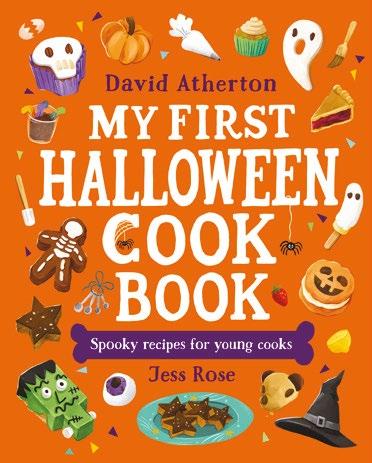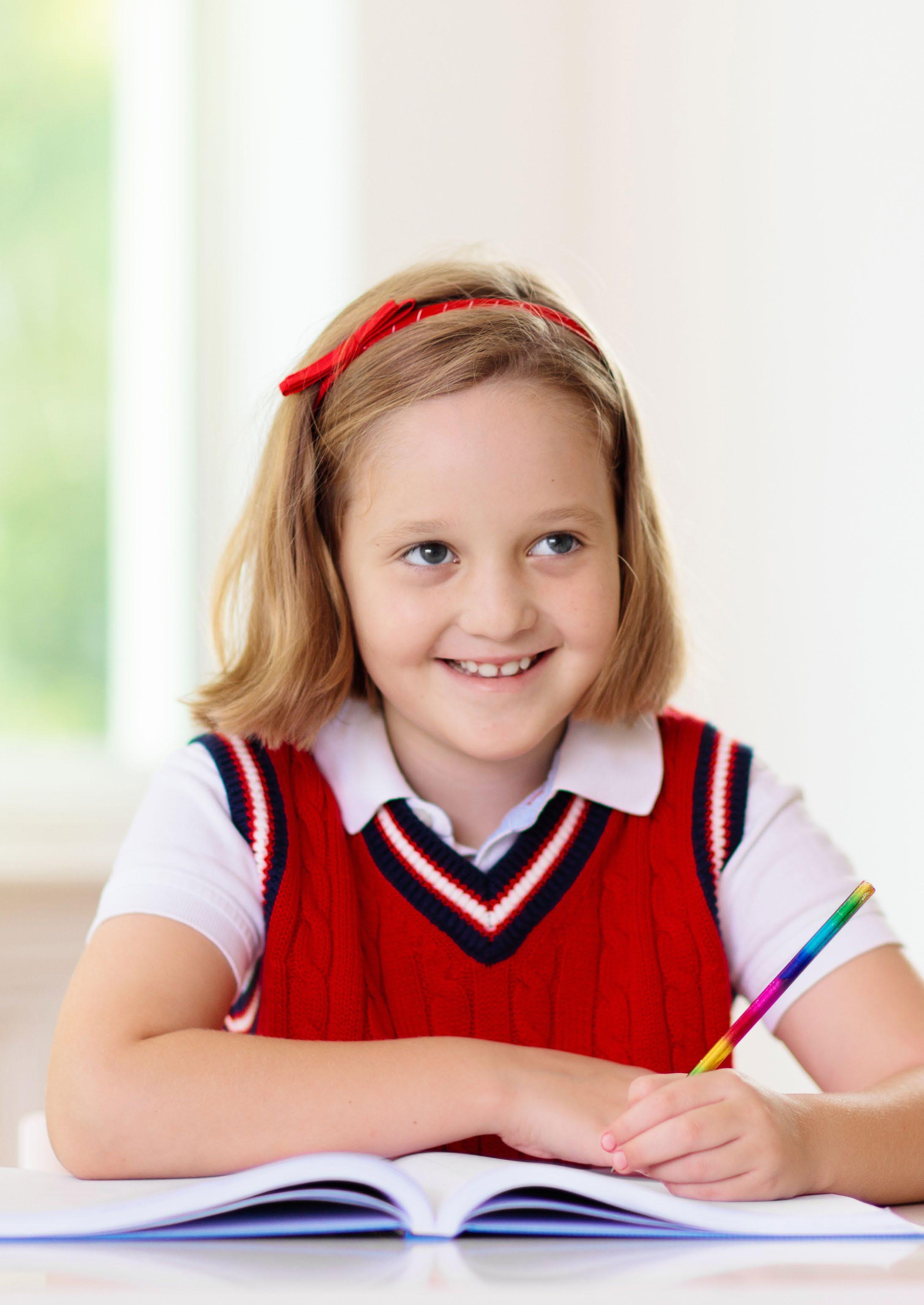




By Claire Hall
Planning the perfect family holiday is no mean feat. Finding a destination that offers new experiences and quality time while satisfying your budget is like a fast-paced game of Tetris. Need inspiration? Here are some ideas for your 2026 getaway.

This lesser-explored corner of the Arabian Peninsula is a paradise for adventurous families, especially those with teens. Unmissable experiences include spending a night at a Bedouin desert camp, hiking Oman’s answer to the Grand Canyon, snorkelling with Green Turtles and swimming in turquoise wadi pools.
The best time to visit is between November and March, making this the perfect Christmas or February halfterm getaway. After you’ve had your fill of thrills, escape to Shangri-La Barr Al Jissah. It’s a beautiful resort with a private beach and family rooms just outside Muscat.

Thailand’s Andaman Coast is a beach lover’s dream and the perfect destination for an island-hopping adventure.
Base yourselves in Krabi for day trips by longtail boats to popular snorkelling spots or backpack between beaches.
Enjoy hopping between island paradises on speedboats which connect the islands all along the coast.
Visit Ao Nang for nightlife, Koh Lanta for mangrove kayaking or the tiny island of Koh Lipe for castaway vibes and coral reefs right off the beach.

Amsterdam may not be the first place to come to mind when you’re planning a city break with the kids. But hear us out. Just a short hop from the UK, within two hours you can be strolling the famous canals thanks to the direct train from Schiphol Airport.
Getting around is easy by bike, tram or on foot. The top family attraction is NEMO Science Museum which is packed with interactive displays. For windmills and tulips, visit during the early May Bank Holiday when Keukenhof tulip gardens are in full bloom.

Cruises consistently deliver family-friendly accommodation, West End standard entertainment and top-notch food. These floating resorts even come with kids’ clubs for tots to teens, epic water parks and play areas.
The most family-friendly cruise lines include Disney, Royal Caribbean, P&O, Norwegian Cruise Line, Princess and MSC.
Visit the Norwegian Fjords, the Mediterranean in summer or try a fly cruise to the Caribbean for winter sun.

For a UK holiday that feels like you’ve flown abroad, head to Devon’s South Hams.
It’s home to Blackpool Sands, one of the UK’s most beautiful Blue Flag beaches, with stunning crystal-clear waters and views.
Explore the quintessentially English towns of Totnes, Dartmouth and Salcombe, all boasting excellent ice cream shops to treat the kids.
For fun family attractions, ride the historic South Devon Railway, cuddle micro pigs at Pennywell Farm or have a whirl on the rides at Woodlands Family Theme Park.

Discover the road less travelled in Slovakia
Despite its location, slap bang in the middle of Europe, Slovakia remains underexplored.
If your family enjoys castles, chocolate box villages and caves, this mountainous country is worth a closer look.
Between UNESCO cultural and natural attractions, spend a few days at the Tatralandia Holiday Resort which has a theme park complete with thirty waterslides and tubes.
Expect to hear more about Slovakia in 2026 as the city of Trencín becomes the European Capital of Culture.
half years living in Oman. Follow her family’s travels on Instagram @tinboxtraveller
Editor Linda Stone info@familiesmagazine.co.uk 020 8241 0423
Next issue: September/October Cover image: www.depositphotos.com
us on social media
www.facebook.com/FamiliesUK www.instagram.com
We hope you all had a brilliant summer and are ready to take on the challenges of getting the kids back into the school routine again... remember it needn’t be the end to your family adventures! There’s plenty about the autumn season to like, including getting outside and enjoying all those autumn leaves.
In this issue, we have a bumper ‘back to school’ education feature. Not only is it the season for children to start or change school, it’s also the season for planning the future education of your child. You’ll find advice on weighing up the pros and cons of a state education versus that of a grammar or independent school in our feature inside. Plus support to help your child embrace the language of learning, what to expect from your child’s school report and how poor processing affects learning.
Halloween and half term will be the next holidays to enjoy. So don’t forget to cut out and keep our great Halloween baking recipe from The Great British Bake Off winner, David Atherton. It’s sure to be frightfully yummy!
Finally, in this issue, we have lots of giveaways as usual. Apply inside.
is made of material from well-managed, FSC®certified forests and other controlled sources. May/June issue giveaway winners Congratulations to all our winners. You can find a list at www.bit.ly/MJ25recipients
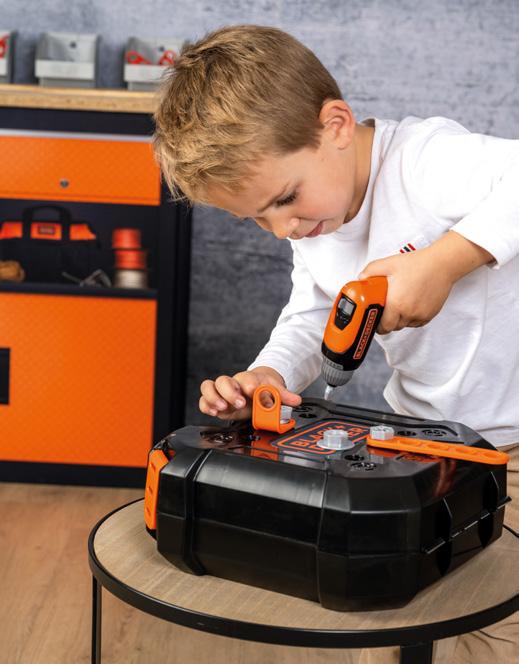
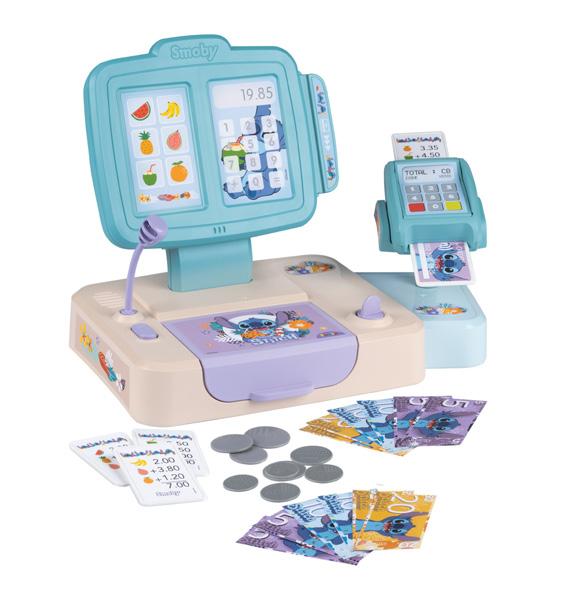
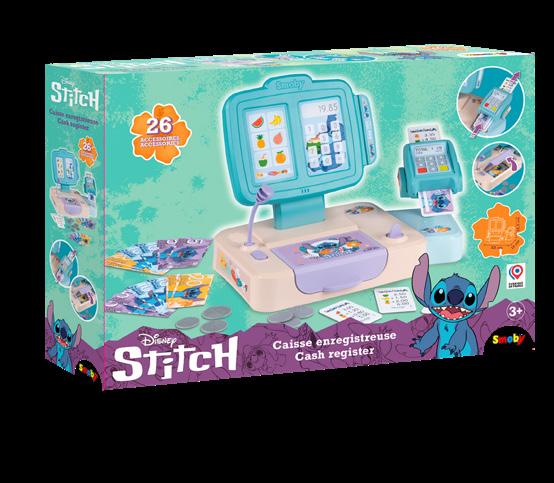


By Zuzu Jordan
How many times have you found yourself in a standoff because your child says they ‘can’t’ do a challenging piece of homework? That word - ‘can’t’ - creates an immediate mental block. It shuts down part of the brain that could otherwise be open and ready to learn. One word can be powerful enough to shape the success of a learning journey.
What if we could help children use more open, hopeful language? What if the words they used gave them the confidence to try again instead of giving up? Let’s look at positive learning language. The way children talk to themselves - and how we speak to them - can completely shift their mindset and learning outcomes. Language is not just about communication; it shapes beliefs, emotions and behaviours. Here are some practical strategies to help develop this kind of language every day:
Acknowledge emotions first
To begin, acknowledge how your child feels. A simple: ‘I can see this is frustrating for you’ or ‘It’s okay to feel stuck sometimes’ can build safety and trust.
Ban the word ‘can’t.’
Replace it with: ‘I can’t do this yet’ or ‘I’m having difficulty with this.’ These phrases shift focus from finality to possibility, reminding children that ability grows with time and effort.
Start with what they know
Confidence grows when learners begin from a familiar place. Encourage the phrase: ‘Use what you know to figure out what you don’t.’ For example, using known multiplication facts to solve more difficult ones.
Break the task into steps
Ask questions like: ‘What can you already do?’ or ‘How can we make this easier by breaking it down?’ This helps children realise that progress often starts with small, manageable actions.
Remind them of past ‘wins’
Say: ‘Remember when this was tricky and now it’s easy?’ Reflecting on past successes helps children see that challenges are temporary and progress is possible.
Celebrate mistakes
Mistakes are mis-takes - opportunities to try again. Reframe
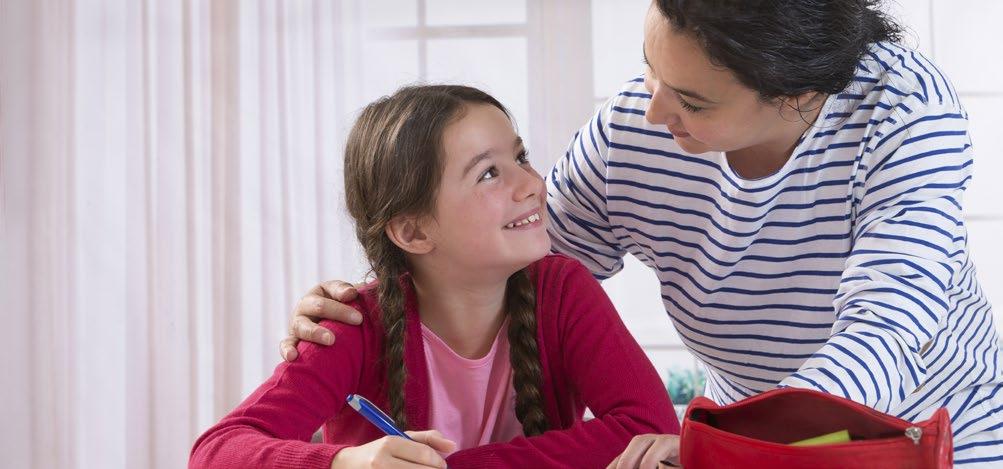
As parents, we naturally want to know our child is doing well at school. Homework often provides the clearest window into their learning. When we support them, we’re also giving feedback, sometimes without realising it. The language we use matters. Focus on their effort, improvements and what they’ve done well. Be specific and encouraging. If needed, gently suggest how they can improve, using kind and constructive language. Thoughtfully worded feedback boosts confidence, builds motivation and helps children feel supported in their learning.

them by asking: ‘What can I learn from this?’ This teaches that every mistake brings a new chance to grow.
Practise positive affirmations
Affirmations such as ‘I don’t give up easily’ or ‘I can work this out’ help your child rewire negative thinking. Repeating them regularly supports resilience and self-belief.
Praise effort over outcome
Say: ‘I noticed how hard you tried’ and ‘You’re improving every time,’ even if the task wasn’t finished. This reinforces a mindset that values learning over perfection.
Use the ‘Three Bs’ Rule
Teach your child to check: Brain – think independently. Book –look for clues or previous notes. Buddy – ask a peer. Only then, ask the Boss (teacher or adult). This encourages independence and self-reliance.
Retrain how they ask for help
Encourage more constructive ways to ask questions: ‘Can you explain that a different way?’ or ‘Can we go over that part again?’ This keeps your child engaged and curious.
The learning journey
Positive learning language develops understanding, resilience and confidence. Like climbing a mountain, the learning journey includes setbacks, discoveries and growth. But with the right words, the path becomes clearer and the climb achievable.
By modelling and encouraging this language, we help children build the mindset they need not only to succeed in school but to thrive in life.
Zuzu is a Mastery for Maths Specialist who has taught primary for eighteen years and is Director of Arnett International. For FREE resources and tips, find her on Instagram @edumate_uk

Parents play a vital role in making learning feel safe and supportive.
Start by creating a calm, distraction-free space where your child can focus. Use encouraging language and praise effort, not just outcome. Let them know mistakes are part of learning and it’s okay to ask for help. Listen without judgement and show patience, even when they’re struggling. When children feel emotionally secure and supported at home, they’re more likely to stay motivated, confident and open to learning.
By Erin Miller
Reading our own old school reports can recall all sorts of emotions, so it’s no surprise that receiving our children’s reports feels significant too. But setting emotions aside, what should we actually be looking for in our child’s school report?
A standard state school report should include a child’s academic progress, a brief summary of achievements, strengths and areas for improvement, attendance records and guidance on arranging teacher follow-ups.
For pupils in Key Stages 1 and 2, reports must also include results from National Curriculum assessments, such as SATs or the phonics screening check, along with comparative data showing how the pupil performed nationally and within the school. It is important to remember that progress matters more than attainment when evaluating your child’s report. As a teacher, I always stress that it is progress that truly counts.
The Department for Education (DfE) requires all state schools in England to provide parents with a written annual report by the end of the summer term, unless the pupil is receiving a school leaver’s report. Individual schools can decide whether to issue reports more frequently, such as termly.
Whilst both approaches have their benefits, I personally prefer termly reports as they allow more regular engagement and ongoing discussion with your child about their learning. Do note that public assessment results (e.g. SATS) are different from school reports and if they arrive after the report has been issued, schools must share them with parents within fifteen school days.

You should not encounter any major surprises when reading your child’s school report. Serious concerns about academic progress, behaviour or wellbeing should have already been raised with you through meetings, phone calls or regular updates during the year. If you do see something unexpected, such as a sudden drop in performance or flagged behavioural issues, it may be a sign that the school’s communication with you has not been as effective as it should have been.
In such cases, it’s important not to panic but to follow up promptly. Use the instructions provided in the report to arrange a meeting or conversation with your child’s teacher or a member of the leadership team. Asking for clarification or context can help you better understand the issue and how the school plans to support your child moving forward. Be specific about what you found surprising and where possible, bring any notes or past communications to the discussion.
Open and respectful dialogue between home and school is key to resolving concerns and ensuring your child is supported.
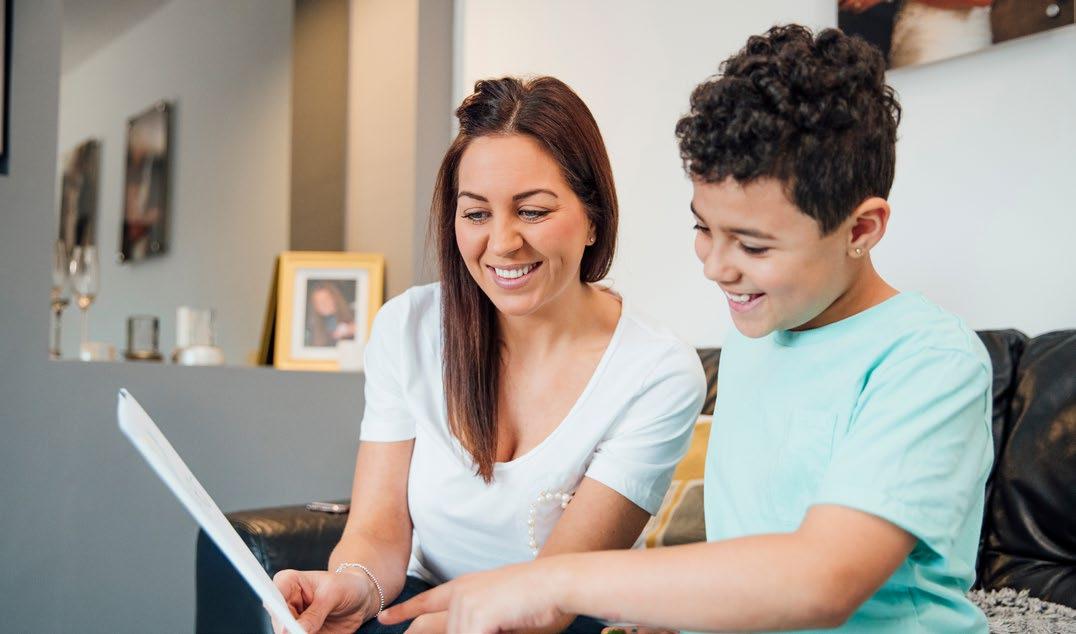
Writing reports is a major administrative task for teachers (as I know only too well) and the style and depth vary depending on school policy. Some provide detailed, subject-by-subject feedback and include pupil reflections, while others offer concise summaries using letter or number grades. As a teacher, I find shorter reports often give greater clarity on a child’s progress.
Schools may also use different styles, such as addressing the child directly to encourage ownership of learning. However, more important than format or length is the conversation the report prompts at home. Take time to review comments and scores with your child and listen to their perspective. Your attention to the report reinforces that school matters and that parents and teachers are working together to support your child’s growth.
Finally, while the DfE framework outlines clear requirements, if you feel something important is missing (even if not required by law), you can raise this with your child’s school to explore possible improvements.
Erin Miller is a teacher with a keen interest in how research can be used in the classroom to improve learning.

As already noted, when reading your child’s report, it is important to focus on their progress rather than grades, scores or levels. While it can be tempting to compare results or aim for high marks, what matters most is how your child is developing over time from their own starting point.
To emphasise this, most primary schools now use descriptors like ‘working towards,’ ‘working at’ or ‘working above’ the expected standard. Some may use terms such as ‘emerging,’ ‘developing,’ ‘secure’ or ‘mastery.’ These are designed to show your child’s progress against age-related expectations, rather than ranking them against classmates.
This gives you a clearer picture of how well your child is grasping key concepts and skills and whether they are moving forward in their learning. Steady progress, even if not yet at the expected level, is still the right path and that deserves more recognition than high attainment with little progress.
Understanding and valuing progress helps you focus on longterm development over short-term results and encourages a growth mindset in your child.
By Jemma Z Smith
Standing outside three school gates - state, grammar and independent - parents often wonder which will best suit their child. Sometimes the answer seems clear: your child is academic and prefers a competitive environment, your location means that you cannot access grammar schools or your finances rule out an independent school.
For other families, there’s no perfect answer, with compromises being made with each decision to ensure a child has the best possible education for them. Here are three stories which show how different schools can fit different children.
Emma
When Emma began preparing for the 11+, her parents could see her potential - she loved books and thrived on challenges. Grammar school seemed a natural step.
At a school Open Day, Emma lit up while discussing Shakespeare and was inspired by the art posters made by exam students that were displayed in the hall. But fast forward to the first set of practice tests: she scored highly on one subject but was in tears over maths errors. Emma confessed she loved stretching her mind but the pressure felt overwhelming.
Grammar schools offer a rigorous environment in which children choose to push themselves. For some, that same pressure becomes a barrier. I’ve coached students who flourish in grammar school settings and others who benefit more from freedom to explore beyond exams.
Leo
Leo moved from overseas and joined an independent school.
Gifted in rugby and determined to improve his English, he found everything he needed there: English language support built into his timetable, tailored lesson plans when he missed class for rugby tours and elite sports facilities. Such schools often shine in surprising ways - they offer time off for performances, personal tutoring for speakers of other languages and flexibility when young people compete in sport or other areas.
But this comes at a cost, not just in pounds (with fees averaging £13,600 a year across the UK plus the recent twenty percent VAT jump) but in expectations. For Leo’s peers, rugby fixtures on Friday and English essays by Monday became a norm and he had to be able to handle his tightly packed schedule.
Keep in mind that applying to many of the more competitive independent schools also involves preparation for entrance exams.
Mia
Mia’s experience was different: she stayed at her local state school with her friends and older sister.
The school’s £8,210 per pupil funding meant that her teachers were well qualified and she was able to study a wide variety of subjects but after-school maths and drama were wanted and needed. Her parents hired a tutor and enrolled her in a weekend drama group. She grew - at her own pace.
State schooling is inclusive and local but not always specialised. That’s why many families build a hybrid model, tapping into local schools and adding tuition or clubs in areas that need a boost.

They choose this route because it suits their child’s temperament: competitive when needed, supported when they need space.
Of course, this route assumes the quality of your local state secondary schools is high. Eighty percent of schools in the UK are now rated Good by Ofsted but there are still some that fall short. Even if you do have good secondary schools within reach, many have defined catchment areas or priority areas, meaning that if you live within this area, you have a higher chance of getting a place. If you are unfortunate enough not to live in the catchment area of a good school, you may choose to look at alternatives to state education, depending on your circumstances.
your
Choosing between a state, grammar or independent school isn’t simply a question of reputation or cost; it’s about finding the right environment for your individual child. That means looking beyond league tables and glossy brochures to consider academic pressure, flexibility, value for money and the day-today experience your child will have.
While academic results and facilities often take centre stage, some of the most important factors when choosing a type of schooling may not appear on a school’s website. Parents may not think to ask how a school fits the whole family: will younger siblings be able to join later on? What happens if a school would suit an academic elder child but not a younger sibling who wants to go at a slower pace?
In boarding environments, it’s worth asking whether students stay at weekends or whether the school empties out, which could leave your child feeling isolated.
At all types of day schools, after-school provision varies widely. Does the school offer clubs that genuinely interest your child? If your child has to use public transport or a school bus to get to school, how will this work if they attend an after-school club?
Schools with a large international cohort can offer wonderful diversity but may also not have a large representation from your culture. Practical details like meal arrangements, pastoral support, holiday schedules and homework expectations can also make a big difference to your child’s day-to-day experience and your family’s long-term happiness.
Ultimately, the decision rests not only on the schools themselves but on your child. Ask yourself: does your child enjoy healthy competition and lift themselves up after failure? Or do they build best through small wins and steady encouragement? The ‘right’ school is the one that meets them where they are and helps them become who they want to be, whether it be state, grammar or independent.
Jemma Zoe Smith works with families as an education consultant to help them to school options. For further advice, visit www.educationhotel.co.uk





Choosing a school is a very personal decision and it’s not just about league tables, exam results or facilities. The real question is: in what kind of environment will your child flourish?
Firstly, take a close look at what’s available locally. Some state schools have excellent enrichment programmes and you may be surprised by the range of support on offer. Grammar schools are selective but not always far from home. And independent schools vary enormously - from traditional boarding to creative day schools - so it’s worth considering several.
When touring a school, look beyond the official tour route. Are students engaged or glazed over in classrooms? Do teachers seem stretched or supported? Check the toilets (a surprising window into how a school manages care and discipline).
Choose the environment they’ll be happy and grow in, regardless of the type of school. Remember, you as a parent know your child best and understand their personality, rhythm and levels of resilience.
If you can, it’s worthwhile speaking to other parents whose children attend the school.
In addition, as you tour schools, there are usually opportunities to speak to the children that attend and ask about day-to-day school life. Raise the questions you ask teachers with these children too. Children are generally very honest! For this reason, it’s good to visit schools during a normal school day or at an Open Day where you know the school’s students will be present.
How is stress handled during exams? Does the school understand the culture that your children have been brought up with? Are children expected to do homework late into the evening? What is school lunch like and can students sit with friends or are they rushed through? These are all aspects of school life that you may feel it important to understand.
Don’t be afraid to ask practical questions too like: can my child miss lessons for competitions or extra-curricular singing lessons for instance? Are there clubs at lunchtime for those who don’t like sport? If you’re considering boarding, ask what happens at weekends. Do most boarders go home?
Ultimately you are looking for a school environment in which your child will be happy and grow in, regardless of the type of school. Remember, you as a parent know your child best and understand their personality, rhythm and level of resilience.
The Raspberry Pi Foundation, the UK’s leading digital skills charity, is calling for a free code club in every UK school and library, aiming to equip young people with essential digital skills for a future shaped by AI. An Opinium survey found sixty percent of parents see coding as important, while over seventy say their child isn’t taught coding regularly at school.
Already supporting two thousand free code clubs, the Foundation helps kids learn to code and build confidence, teamwork and resilience. It offers free training and resources which make it easy for anyone, regardless of experience, to start a club.
Teachers have seen code clubs open doors for all students to be creative and collaborative, breaking down stereotypes about who can code. The Foundation’s position is clear: every child should learn to code to shape an inclusive digital world. Code Club has reached two million children worldwide, with a goal of ten million by 2035.
More info: www.codeclub.org
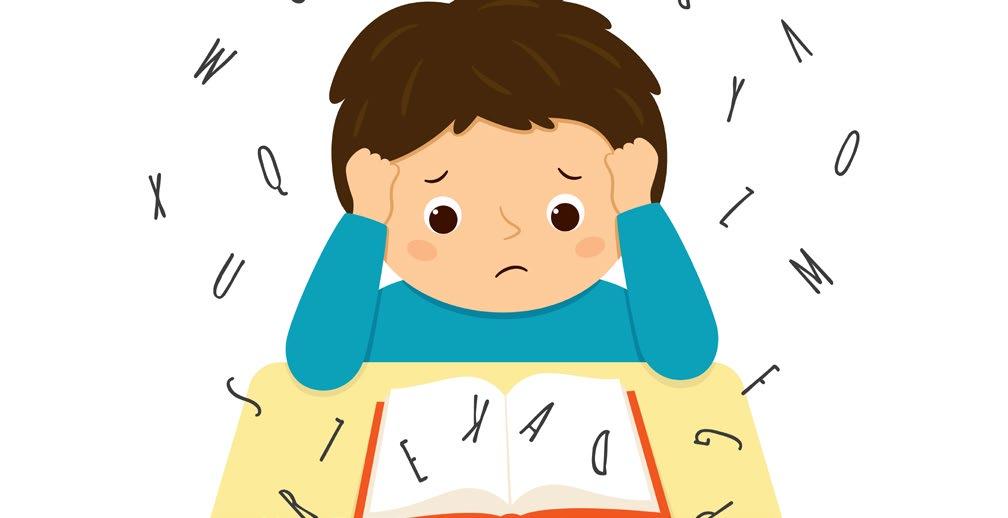
Jamie Oliver, long known for his school dinner reforms, is now on a mission to overhaul dyslexia support in UK schools. Drawing on his own experience with dyslexia, Oliver is partnering with MPs, educators and groups such as the British Dyslexia Association to push for urgent changes.
His campaign centres on three key reforms: mandatory dyslexia screening for all primary school children, better teacher training to recognise and support dyslexic students and wider use of assistive technology like reading pens and audiobooks.
Oliver argues these steps would ensure early intervention, boost pupil confidence and allow teaching to play to each child’s strengths. While his proposals have been praised by advocacy groups, challenges remain - particularly funding, teacher workload and slow policy change. Still, Oliver’s campaign could benefit all pupils by making classrooms more inclusive and adaptable and by improving literacy support for everyone, not just those with a diagnosis.
More information at www.bdadyslexia.org.uk
By Usha Patel
My student Simone is 6 years old and her mum jokingly tells me she has two speeds: slow and slower! Her mum is concerned because the school says Simone’s academics are behind, particularly phonics and reading.
Like Simone, many individuals are affected detrimentally by a slow processing speed. This hinders learning with ease and is one of the things professionals check when testing for neurodivergent conditions
How slow processing affects children
When sounds reaching the brain are not timely, the child either appears not to hear when spoken to or offers a delayed response. It also means they can’t process the sounds fast enough to blend them, which impacts mastering phonics when learning to read.
When visual processing is slow, the eyes do not move easily. Children might compensate by moving their head when reading, which can be tiring.
Slow processing leads to delayed motor control, which in turn, impacts the next developmental stage of fine motor control. This leads to laboured handwriting.
Keeping to time
Temporal processing is the activity of keeping to time within the brain; measuring from microseconds to milliseconds and from minutes to hours. It is responsible for many things including detecting where a sound is coming from (as sound hits one ear microseconds before the other), for waking up, putting the brain to sleep at night and for focusing attention, reading comprehension, remembering information, processing speech, motor co-ordination and other activities.
Helping those with weak or delayed processing speed
Babies and infants automatically learn body (temporal) timing when they learn to move, from feeding to crawling, walking and running. As they move, they activate their temporal processing.
Adjusting the pace of movement impacts temporal processing. Using a metronome (set at 54bpm) to pace activities such as clapping, walking or jumping will add a layer of accuracy to help
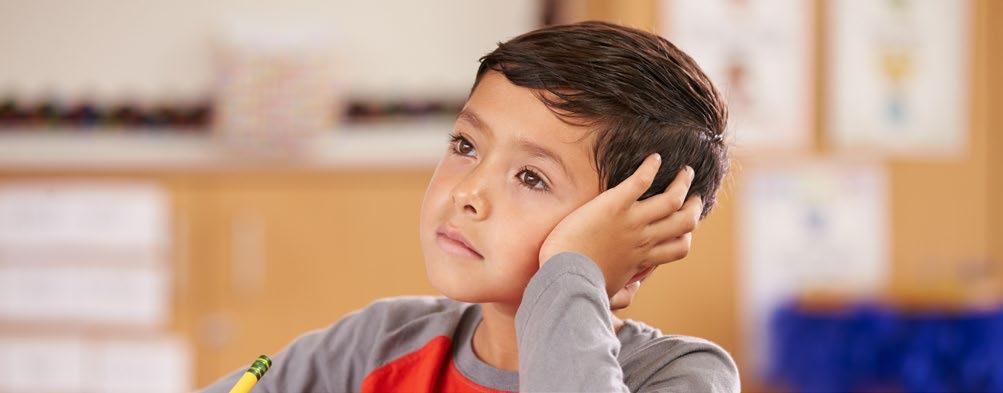
A child with dyslexia will typically show three common characteristics: phonological difficulties, weak working memory and poor processing speed. These characteristics aren’t unique to dyslexia; they may also occur independently or alongside other forms of neurodivergence and the combination of these characteristics is often seen in children who struggle academically. Slow processing is especially significant as it often compounds the overall difficulties and affects learning and classroom performance more broadly.
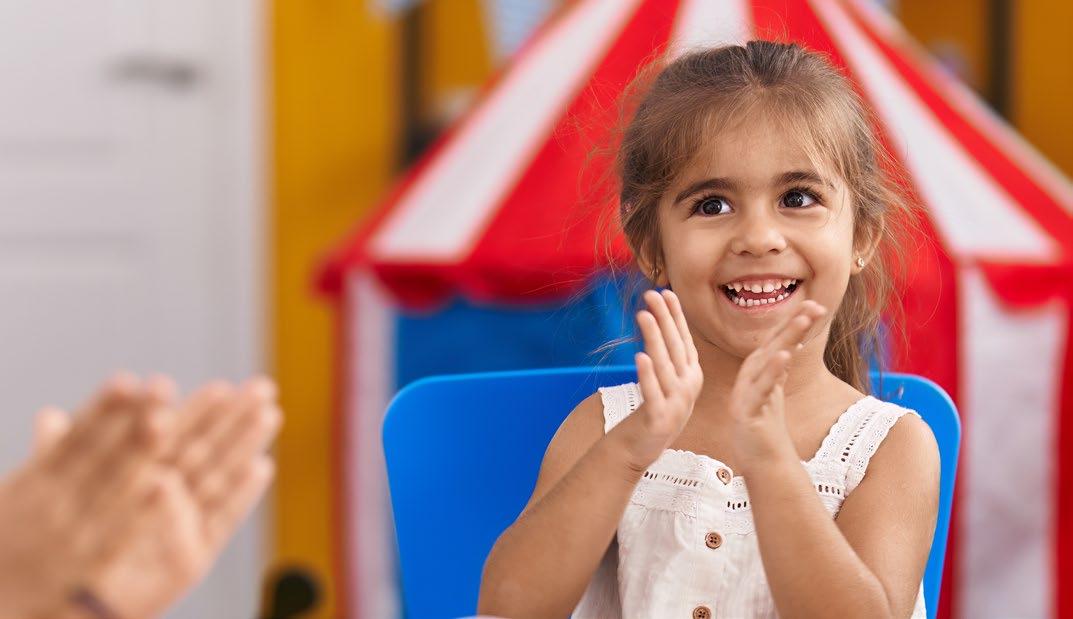
pace and improve those with slow processing. Even when the child stops this timed activity, there will be an increased speed in other areas as a skill transfers. There are many free metronome apps available for smart phones. Working with a metronome for fifteen minutes daily can have a significant impact on improving processing speed.
Therapeutic methods
Interactive Metronome® (IM) is a professional product for those with diagnosed processing difficulties. It helps the brain keep to its internal timing by asking the individual to clap or step to the constant beat of the metronome. Students use touch pads when moving to the beat and the IM software analyses their accuracy and timing to the millisecond. A child uses headphones to listen to further cues and can adjust their pace if they are going too fast or too slow. The programme is gamified and offers a visual element too.
Importantly, the pace at the start is slow and the duration may only be five minutes. However, with carefully adaptive therapeutic sessions, a child slowly increases their temporal processing speed to an optimum level.
Increasing temporal processing speed results in better communication across the brain. When the different parts of a child’s brain communicate better, this improves communication, language, movement, reading, learning and understanding.
Interactive Metronome® has over three hundred research papers. It is an evidence-based programme that can help change the learning outcome for those behind in their studies.
Usha Patel is a Neurocognitive Therapist at Raviv Practice London. She is a qualified Interactive Metronome® provider. For advice on any of these issues, visit www.ravivpracticelondon.co.uk

Poor processing is often a standalone issue with various root causes, many of which are physiological. It may be linked to motor difficulties, where delayed signals from specific body parts to the brain affect how quickly and accurately information is received and handled. This lag can impact a child’s ability to learn, retain and recall information. Poor processing can influence many areas of academic performance, particularly when speed, co-ordination or cognitive efficiency are required for classroom tasks.
By Jodie Herron
With Halloween around the corner, it’s the perfect time to get into the spooky spirit! Whether you’re transforming your home into a haunted house or just adding a few eerie touches, now’s the time to stock up on all your favourite Halloween must-haves.
From creepy cobwebs to caution tape and spooky spider props, you’ll find everything you need to set the scene, without breaking the bank. With great prices on spooky essentials, it’s easy to create a frightfully fun atmosphere for trick-or-treaters, parties or just for the thrill of it!

White Cobwebs
£1.99
It’s easy and fun to create your own decorations for Halloween! So get crafty with the kids. You’ll be able to gather what you need from around your home and from your recycling bin and paint, create and decorate to make your own family of spiders in no time.

Fright Tape
£1.59
Halloween Caution Fright Tape decorations are a simple but highly effective way to set a scary scene. Perfect for doors, walls or outdoor setups, this eye-catching tape instantly adds a sense of eerie danger. It delivers maximum scare factor with minimal effort, guaranteed to spook anyone who sees it. A must-have for any haunted setup.
Witch/Wizard Hat
£1.49

Great for trick or treating
A classic black witch or wizard hat is a Halloween favourite and an essential addition to any costume collection. Timeless and versatile, it’s perfect for casting spells year after year. Whether you’re dressing up for spooky fun or using it as a decoration around the home, this hat adds the perfect magical touch to your Halloween celebrations.
Broom
£4.29

Your child will love developing new skills as they explore painting and sticking. And, under your supervision, they will develop fine motor skills as they practise with scissors.
£2.19
Skeleton gloves are a fun and low-cost way to complete any spooky look. Whether peeking out from an all-black robe or paired with a simple outfit, they add an eerie touch. Perfect for keeping little hands warm during a night of trick-or-treating, they’re a practical and playful accessory for Halloween fun.
£7.49

Add a creepy-crawly touch to your Halloween party with a large fluffy spider prop – this particular one is an impressive 65cm! This decoration is perfect for creating a spooky atmosphere and is sure to impress (and spook) your kids and their friends. Durable and reusable, it’s a fantastic addition to your Halloween setup which can be used year after year - ideal for haunted houses, parties or playful scares at home.

Add a magical touch to Halloween with a witches and wizards broomstick prop. Perfect for completing a spooky trick-or-treating costume or as a fun decoration for your home. Lightweight and easy to carry or display, it’s a must-have for anyone looking to cast a little charm over their Halloween celebrations. A classic accessory with endless spooky style.
Spook up your space with White Cobweb and Spiders. The stretchy cobwebs can be pulled and draped over doors, windows and furniture to create a classic haunted house look. You can add plastic spiders to add a creepy, realistic touch. Cobwebs are a must-have for any eerie Halloween setup - perfect for parties, porches and more.
Skull
£8.49
Add the perfect scare factor to your Halloween setup with a plastic skull prop. With its realistic design and moveable jaw, it’s great for spooky displays indoors or out. Place it on a table among creepy snacks or set it on your lawn to create an eerie graveyard scene - either way, it’s sure to give everyone a fright.

£1.69
Everyone needs a bucket for Trick or Treating and a black cauldron makes the perfect accessory. Bang ontheme, this plastic cauldron blends seamlessly with spooky costumes and adds extra charm to any little witch or wizard’s look. A must-have for trick-ortreaters, it’s lightweight, durable and ideal for holding sweets and Halloween loot.
forGreat trick treatingor

By Sophie David
With early education reform continuing to evolve in the UK, there’s increasing focus on HOW children learn, not just what they learn. As the Early Years Foundation Stage (EYFS) continues to shift towards child-centred approaches, it’s essential to remember that play is not a distraction from learning; it IS learning. Especially in the early years, children make sense of the world, build language and develop communication through rich, hands-on, joyful experiences.
Young children thrive in environments that are safe, stimulating and full of opportunities for exploration. Whether it’s splashing in puddles, baking biscuits or chatting before bed, these reallife experiences are the true foundations of literacy. They spark curiosity, support social and emotional development and help children build the confidence to express themselves. Worksheets and screens have their place but they can’t replace the depth of learning that happens through meaningful, playful interaction.
Confidence before letters
Before children can read or write, they need to feel confident in their thoughts, their voices and their ability to make sense of what they see and hear. Literacy begins long before the first book is opened or pencil is held, it starts with expression and connection. When a child feels that their ideas matter and someone is listening, they become more motivated to communicate.
That’s where play shines. Whether they’re going on a ‘sound hunt’ through the house, forming letters in flour or retelling a favourite story with puppets, children naturally explore language through creative play. These playful moments lay the groundwork for phonemic awareness, vocabulary growth and narrative understanding, essential components of early literacy. Importantly, these skills develop in ways that are meaningful, relevant and fun for young learners.
From screens to scenes
In today’s world, screens are a reality for most families. However, passive screen time can limit children’s opportunities to engage in back-and-forth conversation, imaginative play and independent thinking. The goal isn’t to ban screens entirely but to find a healthy balance.

Go on a daily sound scavenger hunt to explore phonics. Read the same book in silly voices to build expression and intonation.
Bake together, talk through steps and write a menu or shopping list to show how we use reading and writing. Form letters with playdough or sand to strengthen fine motor skills for handwriting.
Sing nursery rhymes and invent new verses; this boosts phonological awareness and future reading success.

Real-world, interactive experiences offer far richer learning. A trip to the park, helping to write a shopping list or building a cardboard post office provides children with valuable vocabulary, opportunities to problem-solve and space to imagine. These everyday experiences are filled with chances to use language with purpose, something even the best-designed app can’t fully replicate.
Conversations that count
One of the most powerful tools in developing early literacy is something every parent has: conversation. Talking with your child throughout the day helps develop both expressive (what they say) and receptive (what they understand) language. The more words and ideas children are exposed to, the more prepared they’ll be for future reading and writing.
These conversations don’t have to be elaborate. Describe what you’re doing as you cook. Ask your child to name objects as you tidy up. Tell stories about your day while on a walk. Encourage your child to share their thoughts, ask questions and invent stories. These interactions build vocabulary, deepen comprehension and foster a love for language.
Back to basics
Supporting your child’s literacy development isn’t about flashcards, early readers or academic pressure. It’s about tuning into their natural curiosity and providing rich play and connection opportunities. When children are given time and space to explore the world, guided by a caring adult, they become confident, capable learners.
As the EYFS framework continues to develop, let’s stay focused on what truly matters: play-based, relationship-rich learning. It’s in the pretend tea parties and the muddy outdoor adventures that real literacy begins.
Sophie David is the author of READ, WRITE, PLAY: 100 Easy Ways to Make Phonics Fun for Children Aged 3-7. Available in hardback (£22, Robinson).
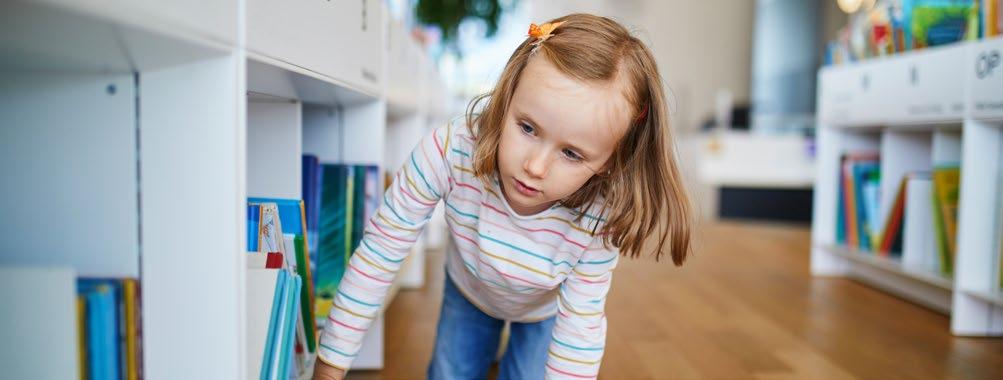
Keep books within easy reach in every room to encourage independent exploration.
Label toy boxes with pictures and words to support natural word recognition.
Talk through daily routines to build vocabulary and sentence structure.
Ask open-ended questions like: ‘What happened in your game today?’ to inspire storytelling.
Use everyday tasks, like setting the table to explore colours, shapes and actions.
By Ann Magalhaes
In the twenty-two years since I became a mum, parenting advice has shifted from trusty books like What to Expect and Gina Ford’s routines to sleek apps, algorithms and an endless stream of online advice. New mums today sip their much-needed coffees while scrolling TikTok and Instagram for information and inspiration.
What has changed?
For starters, once the baby phase passes, many parents are turning to evidence-based parenting classes. These offer practical, science-backed ways to help families thrive. Research continues to show that everyday routines, the words we choose and the way we say them and how we support our children through big feelings all contribute to nurturing their development.
And one truth remains: parents are still their child’s first and most important teacher.
Today’s parents benefit from easy-to-digest information about how a child’s brain develops and how that connects to their behaviour. Neuroscientist Lisa Feldman Barrett, in her book 7½ Lessons About the Brain, says: ‘Little brains wire themselves to their world. It’s up to us to create that world … to grow those brains healthy and whole.’
It’s a good reminder that the little things matter. Reading, singing, snuggling, just being there still matter more than any educational toy ever could.
Emotional wellness
One big change (and it’s a good one!) is how emotional wellness is at the forefront of family life. Parents are learning about the
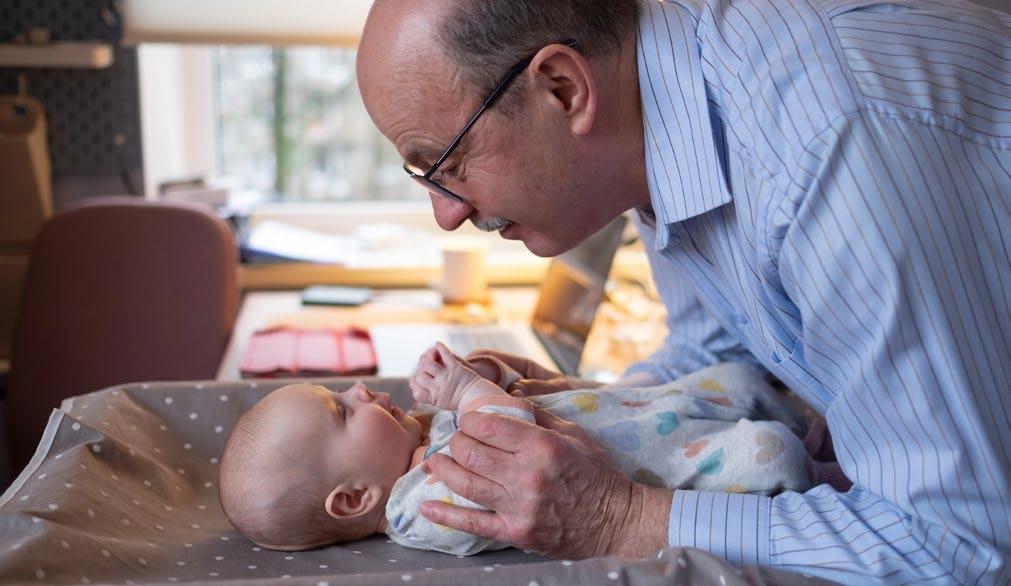
The number of babies born to older fathers is on the rise, says the Office for National Statistics (ONS). Notable examples include Rod Stewart, who became a dad at 65, and Robert De Niro at 79. Professor Allan Pacey, a fertility expert, notes men over 40 are about half as fertile as men in their mid-20s, making this trend particularly interesting.
Births to parents under 30 have dropped, as more people delay starting families. The biggest decrease is among mothers under 20, with births falling by nearly 5%.
Despite a global trend of declining birth rates, England saw a slight increase in 2024, with 567,708 live births - a 0.7% rise from the previous year. Wales, on the other hand, saw a 2% decrease. Greg Ceely of the ONS said the overall rise in England and Wales reverses a recent downward trend, though delayed parenthood is becoming more common.
More information at www.ons.gov.uk

‘4 S’s’ - making sure children feel safe, seen, soothed and secure. And that’s not just good for the kids, it’s great for the whole family.
Dads are more involved than ever, especially since the pandemic saw us working from home and figuring out how to balance work with family life. Today’s parents work more as a partnership, with both mums and dads actively in the mix. Is it perfect yet? No. But the progress is positive.
The rise of baby apps
Today’s 30-year-old mum was 12 when the iPhone came out. She’s tech-savvy - and now there’s an app for everything! One new mum uses Huckleberry, an app she describes as ‘super user-friendly’ and a ‘huge help during those overwhelming early weeks.’
At first, the app helped her track things like weight, sleep and feeding, data she could easily share with her GP. I asked if it ever made her feel like she wasn’t doing enough (because apps can sometimes make us feel that way!). She laughed and said: ‘I always feel like I’m not doing enough as a new mum but I wouldn’t say the app itself is contributing to that!’
So, yes, mum guilt is still a thing. No matter what, parents still feel like they’re falling short, even when they’re doing more than enough.
Positive discipline
One big shift I’ve noticed is in discipline. Thanks to social media and the abundance of advice floating around (some excellent, some less so), more parents are moving away from old-school punishments, threats, bribes and shouting. Instead, they’re learning that authoritative parenting, based on warmth, connection and firm boundaries, is the most effective way to support a child’s emotional development and learning.
In the 1960s, psychologist Diana Baumrind identified key parenting styles and. her ‘authoritative’ style - firm but warm, with clear expectations and positive relationships continues to be the sweet spot for raising well-adjusted kids.
Some things never change
Life today may be faster and busier than it was twenty-two years ago, but some things haven’t changed. Children of all ages don’t need the fanciest toys or the trendiest gear. They need you: your time, your love, your calm and steady presence.
We like to remind parents that they are enough, that their family is unique and doesn’t need to match anyone else’s. As children grow, learn, make mistakes, gain competencies and become independent, the best way to help them is by embracing positive, connected parenting. Yes, you may still feel exhausted (because parenting is really hard sometimes) but you’ll find greater calm and joy amidst the chaos.
As Gretchen Rubin wrote: ‘The days are long, but the years are short. So ... cuddle that baby, or toddler, or tween or teen ... because it goes by so quickly!’
Ann Magalhaes is part of The Parent Team (www.theparent. team), parenting educators offering classes, workshops and private sessions teaching evidence-based parenting skills and offering parents practical, effective support.
By Rachel Jones
How many of us suffer from chronic over-scheduling?
Demanding jobs, childcare, school runs, social and extracurricular commitments leave little space for family life. On average, we devote less than half an hour’s quality time to our child each day. If they’re also spending a lot of time unsupervised on screens, it’s no wonder that parent guilt is very real.
Time spent on social media tends to compound that guilt. While giving us a big dose of the addictive hormone dopamine, it can also trigger feelings of inadequacy or emptiness. By contrast, oxytocin (the ‘love hormone’) is released during simple social interaction. It peaks during childbirth but plays a crucial role throughout life in family bonding and parent-child relationships.
I’m a great believer in encouraging lots of ‘offline’ activities. It doesn’t matter what - paddleboarding, cake decorating, wood whittling, drawing. Don’t just watch from the sidelines, join inshared play is excellent for adults too!
If you have two or more children and can manage ‘us’ time with each individually, it’s powerful. Regular, focused attention builds children’s self-esteem and reduces negative attention-seeking behaviour. Involve your child in everyday routines like cooking or gardening or create special rituals like a weekly games night or sharing a TV series.
When it comes to time spent with our children, quality invariably trumps quantity. According to bestselling author and pastor, Gary Chapman, quality time is one of a human’s five love languages. Simply making time for each other means more than words or gifts ever could.
The dinner table can be a powerful place for open connection, active listening and sharing opinions. Use mealtimes to

The teen years steal the limelight but your child will need extra support between ages 8 and 12. It’s a time of huge emotional and social development as their bodies change and hormones undergo a big surge. Pressures pile in and selfesteem can be shaken.
When you as a parent feel pushed away, it can feel hard to encourage quality time without invading your child’s space. Don’t take their anger or frustration to heart – it isn’t aimed at you. Listen, REALLY listen, calmly and with empathy. Show you’re on their team and make them feel ‘seen.’
Give them more space but also express your love through tiny acts. A little message on their mirror, a note in their lunchbox or leaving a flower in their room can be really a simple way of connecting when life is busy.
Simple age-appropriate activities to enjoy together could be a home spa night, bike ride or café trip. And don’t feel you need to fill every silence either – sometimes just being together, quietly content, is more than enough.

celebrate achievements and ask open-ended questions. The following simple gratitude practice can be very effective; each person has to name their rose, thorn and bud from the day or week:
Rose: what was a highlight and what are you grateful for?
Thorn: what didn’t go so well?
Bud: what are you looking forward to?
By prioritising quality time with our children, we build stronger bonds and foster emotional wellbeing. Simple moments around the table or sharing activities have a profound impact on our relationships. Putting down devices and being present with our children will reap the rewards of a more connected family.
Rachel is the proprietor of Re:treat (www.retreat.me.uk) which runs family wellness retreats and parent and tween spa days in West Berkshire, providing parents and children with a unique opportunity to connect and enjoy new experiences together. Follow @retreatberks on social.

Some children feel uncomfortable and clam up when you try to talk while staring into their eyes. When the words aren’t coming face-to-face, you could try sideways listening – starting a conversation when you’re side by side, such as in the car or on a walk. It also works well when you’re both absorbed in an activity together like arts and crafts, chores or cooking. It’s perfect at bedtime after lights out.
This approach can feel more natural and less intimidating, making it easier for your child to initiate conversations or share difficult topics. The lack of intense eye contact can create a more relaxed space for them to talk about anything that might be worrying them. You may be surprised how much children share when they feel less pressured.
The secret is actively listening and letting your child lead the conversation while you comment more than question.
Set up this routine in early childhood and you’ll be laying the foundation for a healthy and open relationship into the teen years and beyond.
By Ellie Malt
The beginning of another school year is the perfect time to prepare for the illnesses that inevitably re-appear in classrooms as the months get colder.
Recognising the signs and taking precautionary action will definitely minimise the number of sick days off school and work.
Spotting the signs
Scarlet Fever. The most common symptoms include sore throat, fever, swollen neck glands, a bumpy rash on the chest and tummy with a sandpaper-like feel, flushed cheeks and ‘strawberry tongue.’
Measles. Since 2023 there have been major measles outbreaks in the West Midlands, the North West and London. Measles can be very serious and even cause fatalities.
The initial symptoms are runny nose, a cough, sneezing, a high temperature and red, sore, watery eyes. This is followed by white spots in the mouth a few days later and then a rash on the face. It’s very unlikely to be measles if your child has had both doses of the MMR vaccine or they’ve had measles before.
Chicken Pox. A highly contagious, itchy, spotty rash is the main symptom of chickenpox. It can be anywhere on the body.
Prevention is better than cure
If your child’s vaccinations are up to date they will be protected against whooping cough, measles, mumps and rubella. Most

It’s fine to send your child to school or nursery with a minor cough or cold if they are otherwise well and don’t have a high temperature. But if your child has a fever, they should stay home until they feel better and the fever has resolved. If they have diarrhoea they should stay home for at least forty-eight hours after the last episode.
Children and young people are no longer routinely tested for COVID-19. But if your child has tested positive, they should try to stay at home and avoid contact with other people for three days after their positive result.
If your child has the symptoms of measles and has not had both doses of the MMR vaccine, they should not attend school. It’s handy to keep a stock of basic supplies to treat common childhood illnesses, such as Paracetamol & Ibuprofen (child and adult versions), age-appropriate cold treatments, a thermometer, tissues and vitamins (the NHS provides FREE vitamin drops through the Healthy Start Scheme).

provide lifelong immunity.
Unvaccinated children are at higher risk of contracting these illnesses and having more severe symptoms. They can also spread diseases to others. Check your child’s red book or contact your GP surgery to ensure they are up to date.
Which supplements? While vitamins A, C and D support the immune system, the NHS does not recommend mega doses or supplements like zinc or echinacea for cold prevention.
According to the UK government, all children ages 1 to 4 and all babies (unless they’re having more than 500ml of infant formula a day) should take a daily vitamin D supplement throughout the year. Children of any age with darker skin, should consider supplementing all year. For everyone else, the advice is to take a daily vitamin D supplement during autumn and winter.
Teach good hygiene habits
Good hygiene DOES stop infections from spreading. Remind your child to wash hands properly, use tissues for coughs and sneezes and stay away from others when sick. Fresh air can also reduce the spread of viruses.

It may feel as if, in your family, illnesses just get passed round and round, with someone always unwell, particularly during the winter months. But, in fact, your children may not be getting sick any more often than the average child. As a guide:
Babies and preschoolers get seven to eight colds a year. During school age, children average five to six colds a year. Teenagers match adults at four colds a year.
The average for diarrhoea is two to three times a year.
Red flags
More than seven ear infections per year.
More than one serious sinus infection per year.
Two or more months on antibiotics with little improvement.
By Andrew Campbell
Out of school activities offer your child the opportunity to try their hand at something new, develop an existing interest, have fun, get exercise and socialise and make friends outside of school.
Welcome to the Families A to Z which should help guide your selection process.
Art and craft. From painting to pottery, art and craft is great for exploring your child’s creative talents and for simply just getting messy outside of the home.
Babies. Music, movement and/or sensory classes are particularly suitable as they are designed to help your young baby’s social and physical skills develop. They are also a great opportunity to meet other local parents.
Coding. As well as preparing them for the future, classes in coding and robotics teach children logical thinking, maths skills and complex problem solving.
Dance. Not only great for physical health such as flexibility, co-ordination and strength, dance is also beneficial for mental health, as it helps with socialisation, as well as being creative and expressive.
Exercise. From toddlers up, children can get involved in regular simple low-cost exercise classes like local mini-athletics and sports options or junior park run clubs.
Football. As well the most popular sport in the world, football is one of the most well-rounded, developing a host of physical, social and cognitive skills.
Gymnastics. A demanding sport requiring perseverance and discipline, gymnastics develops strength, speed, co-ordination, flexibility and balance. Mastering complex physical feats helps children face and overcome fears.
Horse riding. Offering both adventure and responsibility, this surprisingly vigorous activity in the great outdoors teaches children about empathy and caring for another living creature.
Interests. Be led by your child’s interests when choosing an activity. If they enjoy doing something at home, they are more likely to commit to a regular class.
Judo. Martial arts like Judo are especially suitable for the lively individualist, developing confidence, discipline, focus and fitness. They offer a constructive outlet for excess physical energy.
Kitchen fun. If you have an aspiring chef, cooking classes are great fun and will teach basic life skills and healthy eating. Online options are now available too.
Languages. By starting early, your child will learn faster and more easily; being bilingual improves problem solving, concentration and boosts brain power.
Music. As well as the simple enjoyment, music classes are a great way to explore talent and develop abilities like patience and discipline.
New. Whatever their age, trying a new activity encourages a child to be adventurous and learn new skills. Age brings change, so keep looking for the next challenge.
Offers and trials. Test your child’s interest in an activity with free taster days offered at the end of summer or free trials at the start of term.
Performing arts. Children who sing, dance and/or act learn communication skills, gain confidence, improve academic performance and most importantly, can use these classes as a way of letting off steam and having fun.
Quiet. For SEN children who thrive in a quieter and more supportive environment, there are now a wide range of clubs catering to their needs.
Rugby. A great way for children to exercise while learning respect and how to work and function as part of a team.
Swimming. Ever popular, swimming offers a host of benefits including cardiovascular exercise, improving strength, flexibility,

stamina, balance and posture – as well as being really enjoyable.
Tennis. Helps children develop co-ordination, agility and focus while engaging in a healthy, active sport, making friends and learning teamwork in friendly matches.
Ukulele. The small size of the ukulele makes it an ideal instrument for children to learn, as it allows them to easily hold and strum the instrument.
Volleyball. A fantastic non-contact team sport that is easy to take up due to lightweight balls and basic rules; it’s rising in popularity, especially among girls.
Xtreme. For the child who thrives on adrenaline and risk, consider rock climbing, tree top walking, abseiling, orienteering, circus, go-karting, trampolining or even Parkour.
Yoga. Ideal for the anxious or easily distracted, children learn to manage stress and develop concentration through breathing, awareness, meditation and healthy movement.
Zoo Club. Most zoos offer clubs and programs that give children hands-on experience with animal care and zookeeping.
Get ready for a spooktacular time in the kitchen with this fun and frightfully fantastic book!
Families is giving five lucky readers the chance to win a copy of My First Halloween Cook Book by David Atherton, winner of The Great British Bake O and beloved children’s cookbook author.
Packed with playful, easy-to-follow recipes perfect for little hands, this colourful book is full of spooky snacks, creepy cakes and ghoulishly good ideas to get kids excited about being in the kitchen.
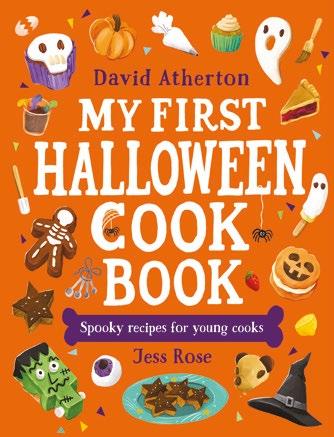


From monster mu ins to ghostly pizzas, David’s step-by-step instructions, beautifully illustrated by Jess Rose, make Halloween baking a treat for the whole family. Whether you’re planning a party, getting creative over half term or just want to enjoy some quality time together in the kitchen, this book is perfect. Don’t miss your chance to winenter today and let the Halloween magic begin!
Closing date: 17 October T&Cs at www.bit.ly/mfcbtcs


Cupcakes are usually round but with a clever trick we can make them skull shaped. If you want to be very fancy, you can get some tubes of coloured icing and decorate your cakes with colourful patterns.
Top tip: it’s important to use really ripe bananas for this recipe because they’re soft and sweet. The best ones are brown or almost black.
Ingredients
Cupcakes:
2 ripe bananas (peeled)
100ml vegetable oil
¼ tsp grated nutmeg
50g caster sugar
50g soft brown sugar
120g self-raising flour
½ tsp baking powder

Step 1
Preheat oven to 180°C (fanassisted).

Step 5
Fill each cupcake case threequarters full. Gently push a baking bean (or scrunched-up ball of foil) either side of the case. Bake for 15 minutes, until golden.
Step 9
Break up the flaked almonds and add little pieces to each skull for the teeth.
Decoration: 150g icing sugar
½ tsp vanilla extract 24 raisins
2 tbsp flaked almonds





Step 2
Fill a 12-hole cupcake tray with 12 cupcake cases.

Step 6
For the icing, mix together the icing sugar and vanilla, then add a tablespoonful of water at a time until you have an icing that is pourable.



Step 3
Add the bananas, oil, nutmeg and sugars to a jug and whizz with a stick blender until smooth.

Step 7
Dollop a spoonful of the icing onto the cake and spread to the edges.







Step 4
Pour the mixture into a mixing bowl. Add the flour and baking powder and mix until smooth (do not beat).

Step 8
Gently squeeze each raisin between your finger and thumb until soft, then place on the cakes for the eyes.
With thanks to David Atherton, winner of The Great British Bake O 2019 for this recipe, which is featured in his new book My First Halloween Cookbook, part of the My First Cook Book series, available online and from all good book shops now.
©Walker Books 2025. Text © 2025 Nomadbaker Limited. Illustrations © 2025 Jess Rose. All rights reserved.

